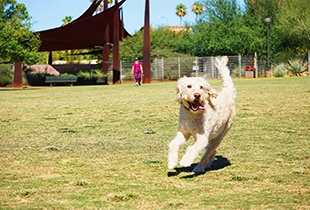Puppy Pads: How to Choose the Best Pads for Your Pet’s Training
Bringing a new puppy home is an exciting experience, but it also comes with a lot of responsibility. One of the biggest challenges for new pet owners is potty training. Fortunately, puppy pads offer an effective and convenient solution for this important training process. But with so many options available, how do you choose the best puppy pads for your pet?
In this blog, we’ll dive deep into how to select the right puppy pads to make potty training smoother for both you and your furry friend. We’ll also discuss the essential factors like absorbency, size, and material that you should consider when choosing puppy pads.
Why Puppy Pads Are Essential for Training
Puppy pads, also known as training pads or pee pads, are absorbent pads designed to help with potty training for puppies or indoor dogs. They provide a designated spot for your puppy to relieve themselves, saving your floors and furniture from accidents. Puppy pads are ideal for those living in apartments or for times when taking the puppy outdoors isn’t possible.
Using puppy pads during training has several benefits:
- Convenience: They provide a hassle-free solution for managing accidents.
- Protection: They protect your floors, carpets, and furniture from damage.
- Consistency: Puppies can use the same spot, helping them establish a routine.
- Hygiene: The pads trap moisture and odor, promoting a cleaner home environment.
While puppy pads make the training process more manageable, it’s important to select the right one for your pet’s needs.
1. Absorbency: The Most Critical Factor
The first and most important factor to consider when selecting puppy pads is absorbency. You want to ensure that the pad can handle multiple uses or accidents without leaking. High-absorbency pads can hold more liquid and prevent it from seeping through onto the floor.
Why absorbency matters:
- Keeps the area clean: Absorbent pads prevent messes from spreading, keeping the surrounding area dry and hygienic.
- Prevents odors: Some high-quality puppy pads are designed with odor-locking features to neutralize unpleasant smells.
- Protects your flooring: Poor absorbency can lead to stains or damage on carpets and hardwood floors.
When choosing a pad, look for those specifically labeled as “high-absorbency.” Some even come with an additional layer designed to wick away moisture, which keeps your puppy’s paws dry.
2. Size: Ensuring Full Coverage
Size is another crucial factor when choosing puppy pads. The right size will depend on the breed and size of your puppy. If the pad is too small, it won’t provide enough coverage for accidents, and your puppy may miss the target. Conversely, if the pad is too large, it might go unused because your puppy won’t be able to distinguish it as their potty spot.
For larger breeds, consider going for extra-large pads, while smaller pads are suitable for toy and small breeds. Puppy pads also come in different thicknesses, which contributes to their absorbency. Thicker pads are often more durable and absorbent, making them ideal for heavier use.
Tip: Consider starting with larger pads during the early stages of training and then switching to smaller pads once your puppy has gotten the hang of it.
3. Material: Comfort and Durability
The material of the puppy pad directly affects its comfort, durability, and effectiveness. The pad should be soft enough for your puppy to feel comfortable using it, yet durable enough to withstand wear and tear.
Here are some material-related considerations:
- Top layer: The top layer should be soft and quick-drying, allowing your puppy to step away without getting wet paws.
- Inner layers: Look for puppy pads with multiple inner layers that are designed to lock in moisture and prevent leaks.
- Waterproof backing: This is essential to prevent the pad from slipping or leaking onto your floor.
Many puppy pads are made with quilted materials, offering a soft feel while enhancing the pad’s ability to absorb moisture quickly. Some premium options even come with scented layers that help mask odors.
4. Special Features: Are They Worth It?
While the basic function of a puppy pad is the same, some pads come with additional features that may make them more attractive:
- Odor control: Many high-end puppy pads come with odor-locking technology, neutralizing the smell of urine and keeping your home fresher.
- Attractant pheromones: Some pads come pre-treated with attractants that encourage your puppy to use the pad. This can be especially helpful in the early stages of training when your puppy may not fully understand where to go.
- Leak-proof edges: For extra protection, look for puppy pads with reinforced or leak-proof edges, ensuring that no liquid escapes from the sides.
- Eco-friendly options: If you’re concerned about environmental impact, there are biodegradable or washable puppy pads that provide a greener alternative.
5. Training Tips to Maximize Success with Puppy Pads
Choosing the right puppy pads is important, but how you use them also plays a big role in how effective they’ll be. Here are some key tips to make potty training smoother:
- Location is key: Place the puppy pad in a specific spot, ideally close to your puppy’s sleeping or feeding area. Dogs tend to relieve themselves shortly after waking up or eating, so having the pad nearby can help reinforce where they should go.
- Praise and reward: Each time your puppy uses the pad correctly, reward them with praise or a small treat. Positive reinforcement helps them associate the act with a good outcome.
- Be consistent: Establish a routine by changing the pad at regular intervals and placing new pads in the same location. Puppies are creatures of habit, so consistency will reinforce their training.
- Gradual weaning: As your puppy grows more accustomed to using the pad, you can gradually move it closer to the door. Eventually, you can eliminate the use of puppy pads altogether and transition to outdoor potty training.
6. Disposable vs. Washable Puppy Pads: Which Is Better?
When choosing puppy pads, you’ll also need to decide between disposable and washable options. Both have their pros and cons:
- Disposable pads are convenient because you can simply throw them away after each use. They’re more hygienic and perfect for households that prefer a low-maintenance solution. However, they can add up in cost over time.
- Washable pads are eco-friendly and reusable. They offer a more sustainable solution but require regular washing, which may be time-consuming for some pet owners.
Ultimately, the decision depends on your preferences, lifestyle, and how much effort you’re willing to put into the cleanup process.
Conclusion: Choosing the Best Puppy Pads for Training Success
Puppy pads are a fantastic tool to aid in your pet’s potty training journey. When choosing the best pads for your furry friend, consider factors like absorbency, size, material, and additional features like odor control or attractants. The right pad can make training more efficient, reduce stress, and keep your home clean and fresh.
By providing your puppy with high-quality puppy pads, you’ll set them up for success, helping them develop good habits while ensuring a more comfortable and hygienic home environment. And remember, consistency and positive reinforcement are key elements in successful puppy training.
Whether you opt for disposable or washable options, your choice of puppy pads will be an essential part of your training toolkit, guiding your pet toward becoming a well-trained and happy companion.




